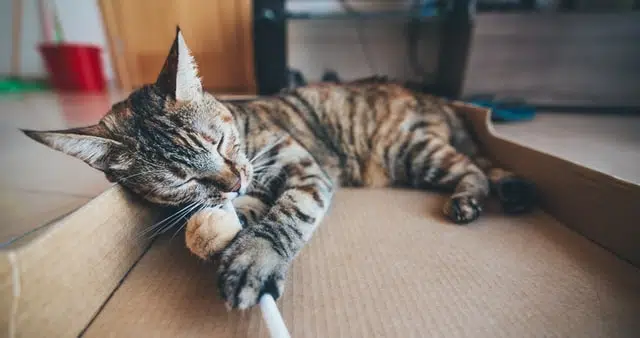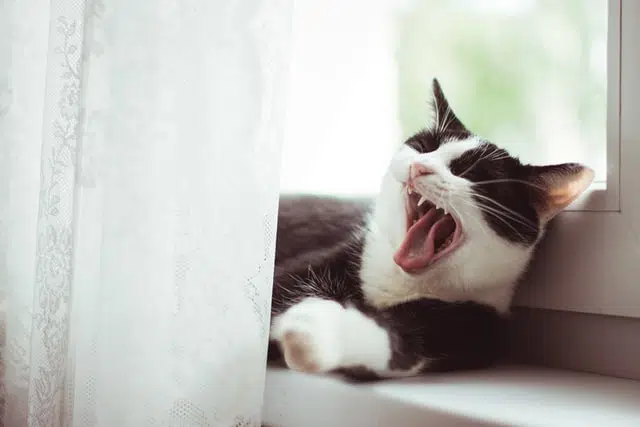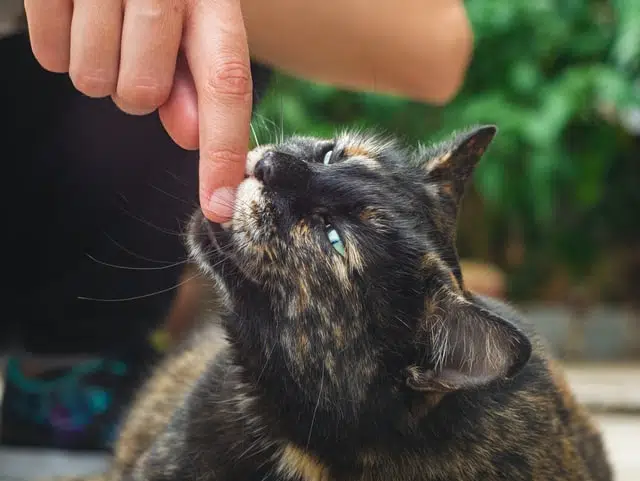Home » Blog » Pet » Pets: Understanding Them » How to Stop a Cat from Biting
Categories
Tags
animal welfare
breed profile
buying a car
buying a pet
Car
car accessories
car care
car features
car insurance
Car safety
car sales
car service
cat
cat behaviour
cat body language
Cat Breeds
cat food
cat insurance
comprehensive car insurance
Dog
Dog Behaviour
dog body language
Dog Breeds
dog food
Dog Insurance
dog training
eco friendly cars
Kitten
New Car
pet accessories
pet activities
Pet Adoption
pet breeders
pet days of the year
pet fun stuff
Pet Health
pet insurance
pet parenting
Pet Safety
pet services
Puppy
rescue pets
road safety
road trip
safe driving
Recent Blog:
Facebook Posts
3 days ago
Are intestinal worms setting up camp in your dog’s gut without paying rent? Here’s how to spot the main culprits and get rid of them too:![]()
![]() Preventing, Identifying and Treating Intestinal Worms in Dogs - bit.ly/43YjCKu
... See MoreSee Less
Preventing, Identifying and Treating Intestinal Worms in Dogs - bit.ly/43YjCKu
... See MoreSee Less
Preventing, Identifying and Treating Intestinal Worms in Dogs
www.pd.com.au
Intestinal worms, such as roundworms in dogs are one of the least glamorous topics on the planet. These intestinal parasites that basically use our dogs
PD Insurance
with Dogs West.
5 days ago
We enjoyed meeting #breeders #doglovers and members at the Dogs West Open Day. Special thanks to our partner Dogs West for organising an incredible event. There is still time to enter our pawsome competition. Click here for details: bit.ly/4covyce![]() #PDinsurance #dogswestopenday #dogswest
... See MoreSee Less
#PDinsurance #dogswestopenday #dogswest
... See MoreSee Less
5 days ago
Did you know? The Manx is a breed that is known for its lack of a tail, which is caused by a genetic mutation.
... See MoreSee Less
Those tiny cat teeth can cause more damage than you’d think. Especially when paired with claws! Luckily, there are three ways to stop a cat from biting and scratching.
Besides from cat bites hurting, they’re also easily infected. So it’s best for everyone if cat parents learn how to stop their cats from biting.
You can encourage healthy behaviour in kittens. That is, behaviour which doesn’t involve biting or scratching you. You can also make it clear to adult cats that being aggressive and biting won’t help them.
Find out how here.
1. React appropriately to stop a cat from biting
Reacting appropriately, in a way that your pet understands, is the key to good communication between human and cat.
But obviously, us humans need to know what reaction means “no” or “stop that” in cat language. And don’t think they won’t understand. Research shows that cats have highly developed socio-cognitive skills.
So, they’re going to pay attention to how you react to their behaviour, including biting.
Employ these tactics for a reaction that your cat will understand:
- Stay calm: getting angry or flustered will confuse your cat.
- Use firm words: choose a word like “no” or “stop” and when your cat bites, say it in a firm voice, but not an angry one. Don’t shout their name, just the “no” or “stop” or whatever word you have chosen. This way they don’t associate their name with being in trouble.
- Point the finger: as you use your firm word, you can also point a finger and make steady eye contact with your cat.
- Step away: leave the room and stay away until your cat is relaxed.
- Don’t touch: if you’re touching, cuddling, or petting your cat and they bite you, stop touching them. Keep your hands away from them so they can’t bite your fingers. If that doesn’t work, physically move them out of your immediate space, and leave the room.
- Give the cat right of way: a cat who wants to bite usually doesn’t like to feel cornered. Make sure they always have an easy way to get out of the situation, so don’t block exits or similar.
Noticing a theme?
Essentially, your reaction to a cat biting should be to withdraw and ignore them. Let everyone have a chance to cool off.
To try and get ahead of any signs that a bite is imminent, read more on cat body language.

2. Use positive reinforcement
Positive reinforcement is the quickest way to encourage your pets to display appropriate behaviour. So to stop a cat from biting, you need to reward and encourage non-biting behaviour.
Treat your kitten or cat with both food and verbal praise when they’re modelling the right behaviour. But don’t go overboard on the treats: obesity is one of the leading causes of diabetes in dogs and cats.
Here are some ways you can encourage good behaviour:
- Kittens: kittens explore the world with their claws and teeth. Think of how toddlers put everything in their mouths. Basically, this means that while your kitten is learning, some bites or scratches might work their way into play and cuddle time. Encourage your kitten to get those teeth and claws into the right targets by having regular play time with toys. Find out about this and other things new kitten parents need to know.
- Cats: who says old cats can’t learn new tricks? To stop a cat from biting, try to get them interested in sinking those teeth into something other than your skin. Cat nip toys should do the trick. Experiment with different types, and praise your cat whenever he or she starts chewing and biting the toy.
Remember not to feed or stroke your cat after a biting (or scratching) incident. Wait for your cat to calm down before petting, cuddling, or feeding.
Otherwise, you’re inadvertently rewarding their biting behaviour and creating a positive association. If they get rewarded with food after biting you, you can be sure they’re going to do it again!
3. Get to the root cause
Although biting is an unpleasant behaviour, it’s still a way of communicating. Finding out the root cause of your cat biting is key to correcting the behaviour.
Consider whether your cat might be trying to communicate something, such as:
- I’m excited. Sometimes your cat can bite when they’re overexcited and ready to play. Kind of like the cat version of puppy zoomies. Read about the importance of playtime for dogs and cats – break out the toys, and redirect them away from your hands!
- I need company. Your cat might be feeling lonely and need more time with humans, or other cats. Undecided about a fur sibling? Read about whether one or two kittens is best.
- I’m feeling broody! Your cat might be wanting to add to their little family. Eeek! Now is probably a good time to read up on spaying and neutering.
- I’m anxious: Had a baby, moved house, got a new pet, or had lots of visitors over? Your cat has mood swings and nervous times too. Some of them are more sensitive to others, so if your circumstances have changed then they might be feeling stressed or scared.
- I’m hurt or sick: Cats, like humans, sometimes get defensive and lash out when they’re injured or ill. If you suspect your cat might be in pain or feeling under the weather, take them to the vet.
Think about your circumstances, your cat’s health and social needs, and whether anything has changed lately. This and the above suggestions might give you some insights as to why your cat is biting. It’s much easier to stop a cat from biting when you know what’s causing it.
Now that you know how to stop your cat biting, read about why cats lick you.

Third party liability and medical cover
If you’re hesitant to get your cat checked out – or adopt a kitty – because of the associated medical bills, consider our affordable cat insurance plans. This way, you protect your pocket and your pet for unexpected bumps in the road.
With PD Insurance you’ll also receive third party liability cover with your policy. So if your cat bites someone (who doesn’t live on your property) or their pet and they need treatment, we’ll help cover your liability if your cat doesn’t have a history of violence.
Share On:




